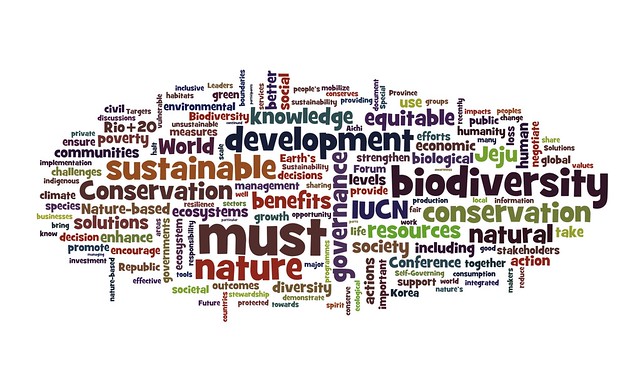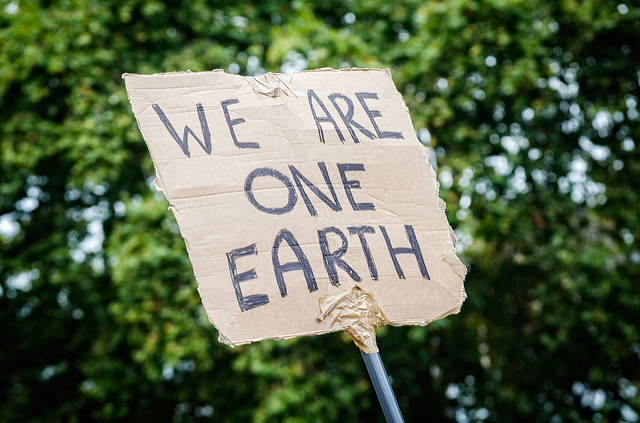
We need to talk about trauma in the environmental field—a feeling not uncommon for people of color. In truth, the natural world in the United States cannot be viewed without trauma, as some of the greatest infractions toward people of color have happened in nature. North American soil is fraught with footprints of land theft, cultural erasure, violence, slavery, and white supremacy. As a black woman, I experienced how much this historical trauma lingers, as white supremacy is so embedded in the ideals of the environmental sector.
I have witnessed gun violence in the early 1990’s in Chicago, so trauma is not new to me. Chicago is a place where food deserts persist, natural spaces are scarce, and where environmental problems are on a long list of other more visible issues. Gun violence was common in my childhood and remains this way for far too many Chicago children. My upbringing has given me a sense of responsibility to bring change and is what partly drove me into the environmental field. Similarly, these types of firsthand experiences often catapult other people of color into the field as well.
However, I believe that racial composition for people of color in environmental organizations and agencies has remained at 12 to 16 percent for decades because of the trauma we face when entering the field. As a black woman, I have experienced this trauma firsthand. When I entered the environmental sector, I was not prepared to feel like an experiment or an interruption to an organizations’ otherwise “normal” flow. Trauma was witnessing whiteness serve as extra bullet points on co-workers’ resumes, while my blackness weakened the bullet points I had worked hard to attain. Being white was deemed innately more environmental. I dodged micro and macroaggressions like stray bullets. Yet, unlike stray bullets, these aggressions were targeted directly at my blackness, a sometimes subtle tool to diminish my right to be in a field where my perspective is greatly needed.
According to a new study by five Environmental Protection Agency scientists, black communities are disproportionately impacted by air pollution due to toxic facility placement. Studies indicate that race is the number one indicator for the placement of toxic facilities in this country. And, in a world where climate change and other environmental degradation disproportionately affect people of color, I naively thought that there would be enthusiastic welcome for new perspectives. Yet, I often found the opposite.

Biodiversity, the variety of life in a habitat, is often an indicator of health. I thought this shared ideal meant understanding the need for diversity in the environmental sector. As I researched, I saw organizations express commitment to diversity on their websites, in printed recruiting material, and videos. Yet, when I arrived, I saw that some organizations had only gone as far as adding this commitment on outward communications. The brunt of the equity, diversity, and inclusion work was placed on people of color instead of a shared organization-wide task. In “For People of Color in Environmental Science”, Tonyisha Harris writes about the burden of a “hidden job”, where diversity, equity and inclusion is expected for people of color in the environmental science field, but not white counterparts. She describes instances when organizations and environmental clubs at her college assumed she was more interested in environmental justice than her passion to do environmental science field work. This often meant an expectation of fulfilling the original job, while also taking on this additional workload without an increase in pay.
In large, I discovered that many environmental organizations do not do the work needed to provide communities of color access without the added element of trauma. Many do not understand their own explicit and implicit biases, and they have failed to acknowledge the trauma an environmental movement built on white supremacist ideals causes people of color. And although they were equipped with the tools to learn and change because of increasing scholarship about diversity, equity, and inclusion, many organizations keep status quo with no imminent need for change.
Recently, environmentalists of color expressed this similar trauma at the hands of the environmental sector. Through firsthand accounts in a campaign, #WontTakeShiftAnymore, environmental professionals of color detailed traumatic experiences that they attributed to participating in the Emerging Leaders Program hosted by SHIFT. They attended because of the organization’s commitment to diversity in the outdoors; however, several participants wrote letters detailing the pain of encountering a white executive director who was unqualified and unprepared to welcome or lead these discussions. In, “A Black Woman Who Tried To Survive In The Dark, White Forest”, Melody Mobley recounts the trauma of sexual assault and racism as the U.S. Forest Service’s first African-American woman. Mobley describes that sexual assault was pervasive and just one of many traumatic experiences she faced in the U.S. Forest Service. Reporting her abuse to superiors only alienated her from co-workers and instead of the rapist being held accountable. She writes that to date, the U.S. Forest Service only retained six black women foresters in 40 years of recruiting.
Trauma and lack of accountability and preparation in the environmental sector is what I believe contributes in continuing the “Green Ceiling”, as referred to in the Green Report 2.0. Again, trauma is not new to many people of color. We’ve lived within the shadows of historical trauma, often told to us by our ancestors. We’ve understood the barriers in choosing a career in the environmental sector. After jumping over systemic barriers and often traveling miles away from home, we are welcomed with more traumas. This trauma has caused me to reevaluate and pursue another career and way to advocate for a healthier planet. While I do not have hope for my future in the environmental sector, I do have hopes. I hope that environmental organizations begin to make diversity, equity, and inclusion work a priority by setting aside a budget. I hope they begin to utilize the available resources and experts at their fingertips. And I hope environmental organizations begin by looking within, as current and future environmental professionals of color deserve a welcome without trauma.
Originally published in Climate Conscious Collabs.

